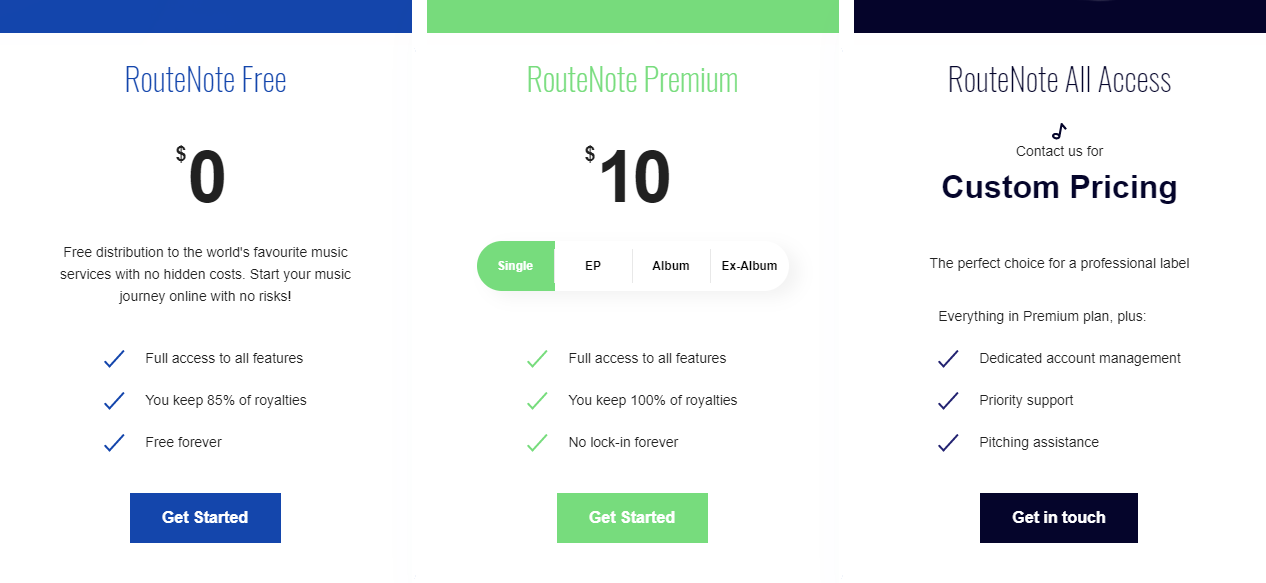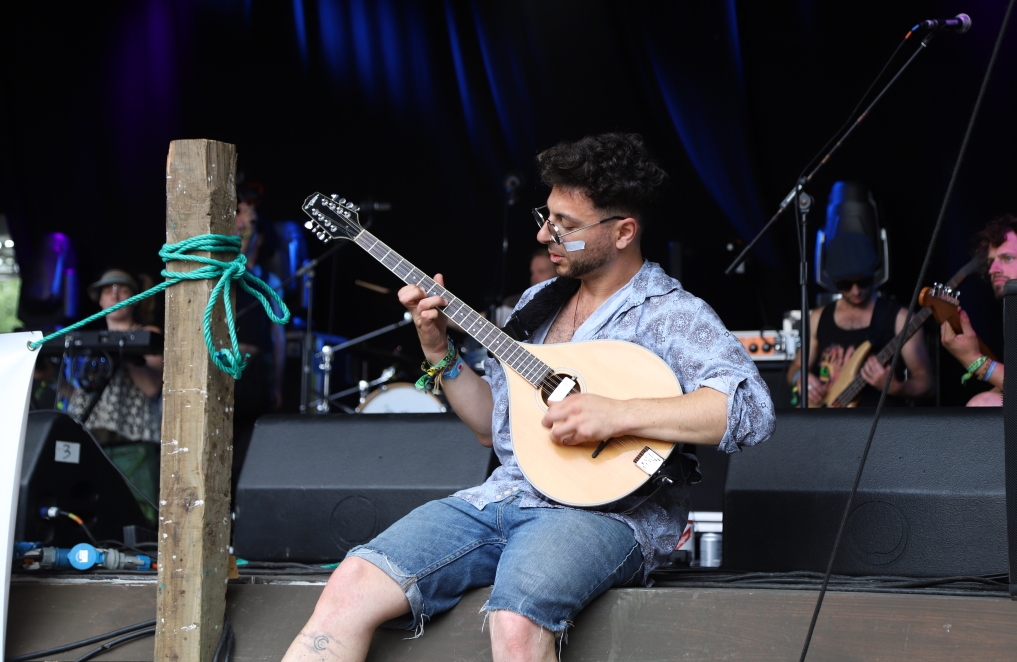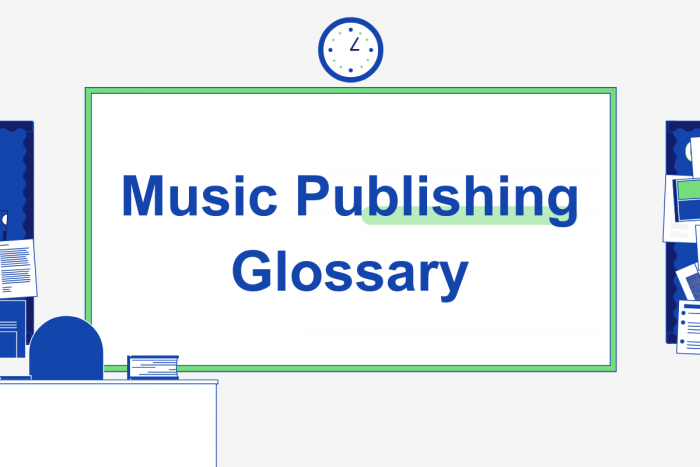Music Publishing 101 – A quick and simple guide to Music Publishing
In this article we’ll explain everything you need to know about Music Publishing, without getting complicated.
Music Publishing; what does it mean, how does it work, how can artists get paid from it, is it really all that complicated? If you’re confused about the definition of Music Publishing then you’ve come to the right place.
It can easily seem like a complicated topic but it’s really not and we’re here to explain it in the simplest way possible so that you can understand it and maybe even begin your own journey into the world of Music Publishing.
Click below to head to the topic you want to learn about:
- What is Music Publishing?
- What does a music publisher do?
- What are Sound Recording Royalties?
- What are Composition Royalties?
- What are Mechanical Royalties?
- What are Performance Royalties?
- What are Sync Royalties?
- What are Micro-Sync Royalties?
- Do music producers get Music Publishing royalties?
- Music Publishing Terms – A Glossary
What is Music Publishing?
Before diving into some of the more specific terms and processes, let’s start at the beginning.
To publish music is fairly self explanatory: it is making music publicly available. This can be as simple as playing it live but usually refers to when a piece of music has become commercially available, for example selling it on CD or uploading it to Spotify, Apple Music, and other digital platforms.
The word ‘publish’ literally means to produce something and sell it to the public. Once your music is out there and available, it has been published.
Music Publishing itself however is referencing the copyrights surrounding your song and/or release that has been published.
This is where a lot of the confusion can come from. Music Publishing as its own term is all about the business of how copyrights apply to music once they’ve been made available to the public and how the artists, labels, and rights-holders earn from their published/licensed works.
What does a music publisher do?
A music publisher is a company or organisation that manages the compositions on behalf of songwriters. They will be in charge of licensing the tracks published and performed by an artist, as well as often being involved in promoting the artist and their music, and sometimes also helping them make decisions for their career.
What are Sound Recording Royalties?
In the age of music streaming, Sound Recording Royalties make up many of the revenues that artists earn.
Sound Recording Royalties are one of the most common source of music revenues in the modern music industry but they are often misunderstood or completely unknown, even to the artists who are earning them.
With the proliferation of digital music streaming platforms – now being the primary source of music consumption for a large percentage of the population – Sound Recording Royalties have become a significant portion of artist’s royalties around the world.
A stream on a track pays out two different types of royalties: the Sound Recording Royalty for the ‘master’ of the track, and Composition Royalties for the song’s creator(s). The Sound Recording Royalty applies to the actual recording of the music that is being played when someone streams a song.
Sound Recording Royalties are what record labels and distributors (like RouteNote) receive from streaming services to compensate artists for plays of their music by listeners. This means that in the modern music industry where a large portion of an artist’s interaction comes from the streaming of their music, Sound Recording Royalties are a large portion of overall revenue flow for artists and the music industry.

Are other royalties collected by music services?
Technically other royalties should be collected on streams as well. Mechanical Royalties and Performance Royalties can both be collected by artists with their music on streaming services, however it’s not as straightforward as the direct cash flow from streaming platform to label/distributor to artist.
Mechanical Royalties are earned from the stream of a track, which technically counts as the reproduction of a piece of music (the basis for Mechanical Royalties in the realm of physical music). These are then collected by mechanical rights organisations like the MLC, Harry Fox Agency, and Music Reports.
What are Composition Royalties?
From the moment you’ve written a piece of music you have a legal basis over your ownership of the track you’ve conceived. The lyrics, music, and arrangement of the track come together into the composition and the composition copyright for that track is legally yours as the creator, or jointly owned with any co-creators.
How do composition revenues work?
Revenues are generated for the composition of a song when it is reproduced and played. The rightful recipient of the Composition Royalties is the original songwriter, although it could be the case that they’ve sold the rights to the original composition in which case they are owed to the rightsholder.
In the case where the recording artist of a track is not the original songwriter, for example an artist is covering someone else’s song, then the composition revenues are redirected to the owner of the composition copyright.
For example: Jeff Buckley covered Hallelujah, originally by Leonard Cohen. When he releases his cover of the song, Leonard Cohen is entitled to the earnings made from the composition copyright on the track.
How to ensure your composition copyright is protected
our composition copyright is yours when you’ve created your song in a palpable form. This means that the music or lyrics have been recorded, put onto paper/in a document, or any other form that can be produced as evidence of its creation. Dating your document or audio file will help to ensure it’s proven to be the original.
If you’re in the US, you will need to register the copyright of your composition with the Copyright Office to get full copyright protection on the piece.
What are Mechanical Royalties?
Mechanical Royalties in music are generated from the reproduction of a musical composition. Traditionally these royalties were generated every time a composition was reproduced in the form of a vinyl or CD pressing.
Nowadays Mechanical Royalties are also generated from on demand (interactive) digital streaming and downloads. Whenever a track is played on demand or downloaded in digital form the underlying composition is being reproduced, therefore generating a Mechanical Royalty. The same on demand stream would generate a Mechanical Royalty and a Performance Royalty, this is due to a public performance & reproduction of the composition.
A good example of both royalties being generated would be a stream of a track from Spotify, whereas a digital download would only generate a Mechanical Royalty.
Who collects Mechanical Royalties?
When Mechanical Royalties are generated it is the composition copyright owner who is rightfully owed them. How the composition owner gets paid depends on a number of factors, in particular how the composition has been reproduced & in what territory.
For example, in the US a physical copy or a digital download of a track generates a minimum Mechanical Royalty of 9.1 cents per track that is reproduced, whereas an interactive stream of a track is licensed and paid out by online stores using a formula based on their own parameters.
These Mechanical Royalties will be collected by your nations MRO’s (Mechanical rights organizations)
In the U.S this would be the MLC, Harry Fox agency & MusicReports, in the UK this would be MCPS (aka one half of PRS for Music – a joint venture between PRS & MCPS).
To collect your Mechanical Royalties from a collection agency you will need to sign up to a membership with them. The collection agencies available to you will depend on your location and will usually cost a fee to sign up with.
How to get a mechanical license for a cover song?
How to get a copyright license is a common question for artists. A mechanical license may be required if you want to release a cover song.
You can distribute cover songs using RouteNote to Spotify, Pandora, Deezer, iHeartRadio, Nuuday, Anghami, and JioSaavn without a license. You can also distribute to our other partners if you exclude the USA, Canada, Mexico, India, and Pakistan from the territories you want to distribute your music to.
To distribute in all stores worldwide, you will need to get a mechanical license. There are a number of sources you can get a mechanical license from, but we’re proud to recommend Affordable Song Licensing for mechanical licenses.
What are Performance Royalties?

Performance Royalties are being generated all the time in shops, bars, theatres, on the radio, on TV and beyond. Yet they’re often overlooked by artists who might not fully understand how they work or may not understand how to collect them – or even that they could be collecting rightfully owed royalties in the first place!
Performance Royalties are somewhat self-explanatory in that they technically cover the music being performed to the public, but it’s not quite that simple. It’s more accurate to say that Performance Royalties are for any broadcast of a track, whether that’s a live rendition or the playing of a track out loud to a public audience.
Performance Royalties are generated when a track is played on the radio, broadcast on TV, performed on stage or anywhere else with an audience, played in shops and businesses open to the public, and in other similar contexts of broadcast.
The royalties for these are generated for the composition copyright, which is for the original composition (duh) and therefore not necessarily the track as it is being played. For example, if a band is playing a cover song to a crowd at a venue then the Performance Royalties for the track go to the original songwriter(s) of that track.
Performance Royalties, wherever they are generated, will always come back to the original songwriter.
Who collects Performance Royalties and how are they paid to artists?

For the most part, Performance Royalties will be collected by Performance Rights Organizations (PROs) like ASCAP AND BMI in the US, SOCAN in Canada, and PRS and PPL in the UK. These organisations will collect payments from venues and businesses who play music in public which is then collected into a pot to be distributed out to their members.
The way PROs collect payment for performance copyrights will depend on the context. With radio stations and TV broadcasters there will often be a direct agreement with a payment secured. In the cases of public spaces like venues and shops there will usually be a license or one-off payment arranged to cover the revenues for any music played in their business.
Artists can sign up join Performing Rights Organisations who will then work to track how much each artist is entitled based on a percentage of their pot. They will pay out the considered earnings to rightsholders and their publishers.
How do Performance Royalties work on streaming services?
Technically a stream is considered a public performance of a song. This means that it generates a Performance Royalty, as well as Mechanical Royalties and Sound Recording Royalties. However the rates for Performance Royalties generated through streaming services are varied and will differ between territories.
PROs will collect royalties from streaming services as well, making for easier tracking and collection than their broader rights management across public performances.
What are Sync Royalties?

Sync Royalties are the revenue that is earned from compositions that have been used with another piece of media. The most common use of sync licensing is when music is used in film and TV. The producers of that media will agree on a license with the rights-holders behind the composition and normally a payment will be made based on the distribution and viewership of that content.
What are Micro-Sync Royalties?
Micro-sync often refers to the sync royalties collected through internet platforms like YouTube where the sync royalties collected are technically micro-sync royalties. Micro-sync royalties are sync royalties but collected on a larger scale than their traditional sources like TV and film.
Depending on the source of the synchronization, micro-sync can also generate both performance and mechanical royalties. These will be tracked, collected, and paid through each country’s collection societies, like ASCAP and BMI in the US.
They are often not as high-paying as sync-royalties generated from blockbuster films but they have huge potential thanks to their open, worldwide audience with free access to the content online.
Does YouTube pay micro-sync royalties?
YouTube sync royalties can also be referred to as micro-sync royalties. As music added to YouTube is added alongside moving image, they are eligible for micro-sync royalty payouts and YouTube currently pay out micro-sync royalties for views in the US.
For plays on any use of your tracks on YouTube, we can also collect for the Composition Royalties if you’re the artist who owns those rights.
We believe artists should be earning more for their music when it’s streamed online through the licenses that apply to their music. We hope to have more news on how we can do that soon.
To check if your music is eligible to collect micro-sync royalties on YouTube through RouteNote, fill out this form and we’ll get back to you: https://forms.gle/GzqpP4hnAH8728b18
Do music producers get Music Publishing royalties?
Answer: Yes and No.
The music producer won’t normally receive any music publishing royalties unless it was agreed in the contract and/or the music producer added an element to your finished track.
Music Publishing Terms – A Glossary

Getting into the world of music publishing? Here are the definitions to the most common terms used in music publishing so that you’re never lost whether you’re looking at sync licenses, the many types of royalties, or beyond.
Advance
An advance is essentially a loan, it is a lump sum of money that can be paid across by a publisher in order to enable a songwriter to compose as much as possible. This money is often used on equipment, travel and self promotion. An advance is recoup-able by a publisher, and will be paid back by the songwriter through the royalties that are earned from the compositions. The songwriter may not earn from these royalties until the advance is paid back in full.
Composition Royalties
Royalties that are generated through use of a songs composition, including but not limited to; downloads, online streaming, duplication and synchronization.
MCPS
UK based mechanical rights society who collect mechanical royalties for the duplication/reproduction of compositions.
Mechanical Royalties
Mechanical royalties are generated anytime a composition is reproduced in some form, this can be physically in the form of a CD/Vinyl/Tape etc or digitally in the form of streaming or digital downloads.
Music Publisher
A music publisher manages compositions on behalf of songwriters, this includes the licensing of catalogues, promotion of the songwriter, their tracks and collection and payment of royalties etc.
Music Publishing
This refers to music licensing and the collection of royalties that are associated with the use of a songs composition. These are different to the royalties that most distributors currently collect, which are associated with the use of the songs sound recording.
Performance Royalties
Performance royalties are generated every time a song is broadcast in public. This includes but is not limited to radio plays, a performance on TV, a live show or background music played in a cafe. (RouteNote aim to be able to collect these in the near future for our users)
PRS and PPL
Joint UK based neighbouring rights society and performing rights society, collecting royalties for the public performance of a sound recording and performance royalties for the performance of compositions.
PRS for Music
A joint venture by MCPS and PRS to create a royalty collection society that streamlines mechanical and performance royalties into one place for songwriters. Now joined with PPL.
Publishing Administrator
An administrator will register, audit, claim and dispute your royalties for you.
YouTube Royalties
YouTube generates different types of royalties for songwriters: Performance royalties for the public broadcast of your composition, Mechanical royalties for the interactive stream (reproduction) of your composition & Sync royalties for the use of your composition against a moving image (US only).
YouTube Sync royalties
Royalties that are generated on YouTube through the use of a composition and moving image put together. Standard YouTube Content ID collects royalties associated with the sound recording, not the composition. Whilst these work in a very similar way to normal Sync royalties, these are referred to as micro-sync royalties as they’re generated on a per-stream basis on publicly available content. Artists can apply to collect these with RouteNote.
